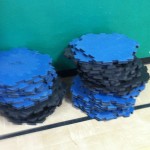This course is designed to introduce prospective teachers to lessons, activities and games that reflect changes in the emphasis of the P. E. Curriculum. At its core, this is essentially a move away from sports-only skills and a move toward the much more inclusive concept of lifetime fitness.
Frank James, the instructor of this course, is a veteran Elementary School teacher with 31 years of experience teaching in Grades K-6. The first twenty years of teaching were in the classroom and the last eleven were as a P.E. teacher. So, students taking this course will find many practical ideas for the classroom, in addition to the teaching and management of activities and games in the gym.
What You Will Learn from this Class?
This course will allow UO students the opportunity to learn P.E. activities in the course during the Friday class, then see those same lessons and activities as they are taught with elementary age students during practicum opportunities. Along with the knowledge of how to teach elementary students in the gym, these classroom management ideas may also be applied to the classroom setting.
The number one problem in the classrooms is not discipline: it is lack of authentic learning tasks, procedures, and routines”. Harry Wong Former National Teacher of the Year.
Procedures and routines are utilized in our P.E. classes by designating a gym home for each student. The gym home is essentially like a classroom desk where a child begins and ends their day. The Edison gym is set up to visually facilitate classroom management through walls that are painted with the four primary colors and color coded squares on the floor that are the ”gym homes”. for each student. The floor is designed by spacing out squares in six lines, with each line a different color team. Once they know where their gym home is all the teacher has to do is say the words, “gym home” and students know exactly where to go. The color teams allow for the teacher to quickly break the class in half or assign each color team to a station (when there are six stations). Creating this kind of predictable environment empowers students and leads to better learning outcomes.
82 % of teaching communication is nonverbal Patrick Miller NEA Research
With the level of excitement and the amount of movement in the gym, it is essential for the teacher to have some nonverbal cues to immediately move students. Traditionally, blowing a whistle or raising your voice is used to get the attention of the class. In this class you will learn how to use music as a major component of classroom management in the gym. The teacher introduces what the students will be expected to do whenever they hear a certain the song. The students may need to practice or role play the particular skill. For example, when it is time to pick new “its” for a game, the music changes to a different song (I find that popular movie themes work well). Once the students know the cue, the transition is often completed without verbal directions from the teacher. Whenever a teacher is able to utilize nonverbal cues to manage behavior, their voice is saved for teaching.


